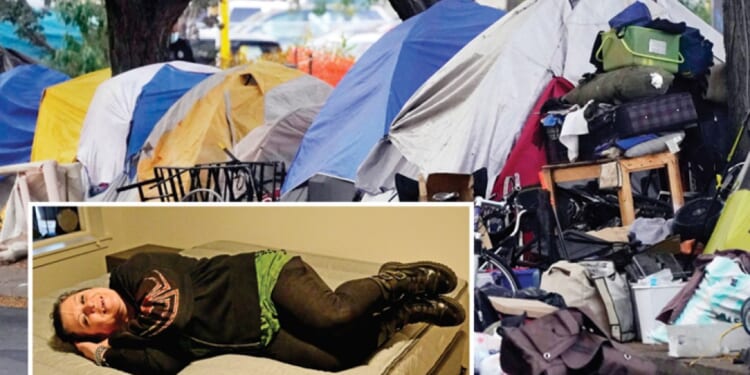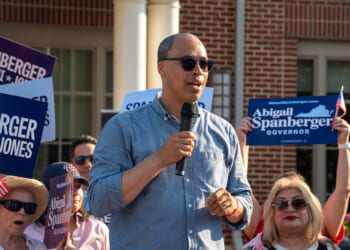America’s largest cities — New York, Chicago, and Los Angeles — have long been symbols of Democratic power. Yet today, they are also symbols of dysfunction, plagued by crime, failing schools, homelessness, and crumbling infrastructure. What’s less discussed, however, is that these crises are not confined to the nation’s biggest urban centers. Smaller Democrat-run cities, including Baltimore, Denver, Detroit, Minneapolis, and Portland, are mired in the same struggles, often with fewer resources to fight back. Together, they reveal a national pattern: When Democratic governance dominates unchecked, decline becomes entrenched and ordinary residents pay the steepest price.
Each of these cities has different demographics, geographies, and economic challenges. But what they all have in common is over 50 years of one-party rule. The Democratic Party has had a monopoly on political power in each of these five jurisdictions for generations, without any Republicans to stop them from implementing the “best” Democratic policies. So what do Democrats do when they have all the power?
A ‘cancer of fraud’ in Baltimore schools
Despite spending $18,272 per student, well above the national average of $15,591, Baltimore City Public Schools routinely ranks among the worst in the nation. According to the most recent National Assessment of Educational Progress, 8% of Baltimore’s eighth graders were proficient in math and 16% in reading. Only Cleveland and Detroit fared worse, while districts such as Duval County scored much higher despite spending far less per student ($10,696). One recent study found that 40% of Baltimore’s high schools had zero students proficient in math.
Baltimore has long had a corruption problem that permeates every city agency. In 2010, then-Mayor Sheila Dixon was forced to resign after she was convicted of embezzlement from funds intended for needy families. In 2019, then-Mayor Catherine Pugh resigned after she pleaded guilty to tax evasion and conspiracy charges in connection with funneling hundreds of thousands of dollars for healthcare nonprofit groups to her own benefit. And in 2024, former State’s Attorney for Baltimore Marilyn Mosby was convicted on two counts of perjury and one count of making a false statement on a mortgage application. She lost her reelection bid in 2022.
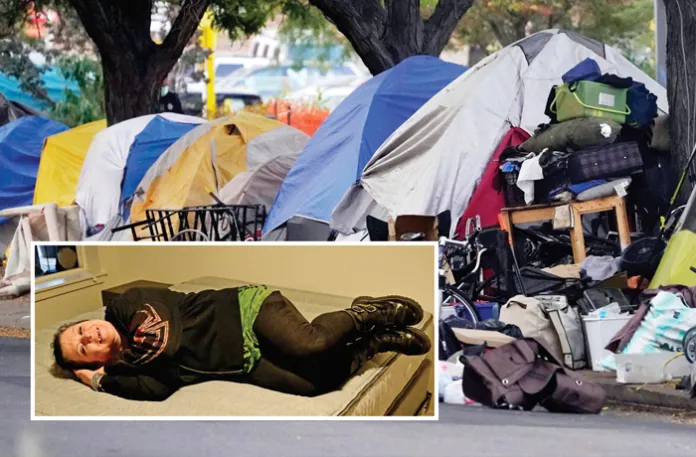
With a culture of corruption coming from the top, it is not surprising that almost a dozen Baltimore City Public Schools maintenance employees were convicted of bribery and theft for billing the school system for repairs that were never completed.
And the maintenance staff members are not the only ones cheating in Baltimore City Public Schools. A bombshell 2022 Maryland Office of the Inspector General for Education report found that half a dozen Baltimore City Public Schools administrators and principals, including illegal immigrant fraudster Ian Roberts, had fraudulently changed the grades of over 12,000 students to boost the system’s graduation rate.
“The level of fraud in Baltimore City Schools is like a cancer,” Maryland legislators recently wrote. “It has metastasized — almost completely unchecked — for decades.”
Baltimore’s current mayor, Brandon Scott, has so far managed to avoid any corruption scandals, and he has invested hundreds of millions of dollars into the school system’s failing infrastructure while generously funding other liberal policy priorities, including violence prevention, expanded extracurriculars, and summer programming. But the city’s test scores have not improved and still rank among the lowest in the nation.
Baltimore has not had a Republican mayor since 1967.
Denver, the ‘dumping ground’ for homeless
Colorado’s homeless population has grown by 90% since 2020, the fourth-highest rate in the country, and the surge is being driven by the state’s largest metro area, Denver, which has seen a 74% surge over the same time frame.
“Broadway is my favorite street in the whole state of Colorado,” real estate agent Vivi Gloriod recently told the local ABC station. ”I absolutely love Broadway. I love the restaurants, I love the bars, I love the music scene. It’s just a really fun, fun street. It has, unfortunately, over the past few years, gotten not as fun. We have become the dumping ground.”
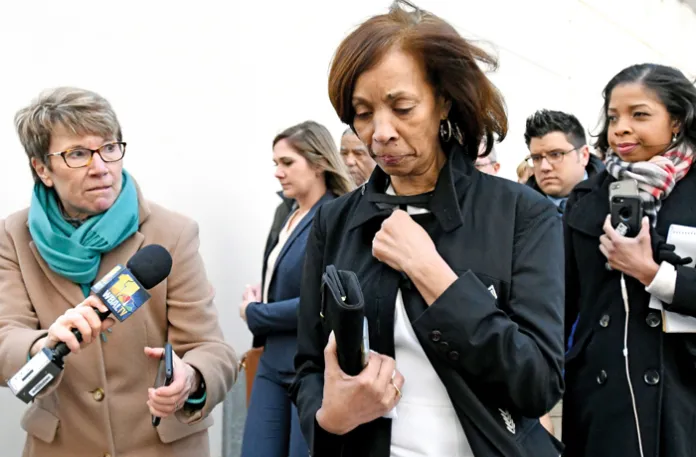
Home to the city’s Gothic Theatre and music scene, Broadway has become plagued by homeless tents and encampments in recent years, a problem that stems directly from the city’s approach to dealing with homeless people.
It doesn’t help that the state legalized marijuana in 2014. Studies show that states where marijuana has been legalized have higher rates of substance abuse than those where marijuana is still illegal, and close to a third of Denver’s homeless population reports having a substance abuse problem. Another 36% report having a mental health condition.
Cities have basically two choices when addressing homeless populations: housing first or intervention.
The housing-first approach involves getting homeless people into permanent housing, usually private studio apartments, and then hoping they will seek out additional services, such as substance abuse counseling, mental health treatment, and job training.
The intervention approach also ushers the homeless into shelters, but these are usually non-private areas where drugs and alcohol are forbidden. Residents are expected to stay sober and attend job training services until they are self-sufficient enough to find a housing solution on their own.
Denver, of course, has chosen the more liberal housing-first approach, and the numbers listed above speak for themselves. It isn’t working.
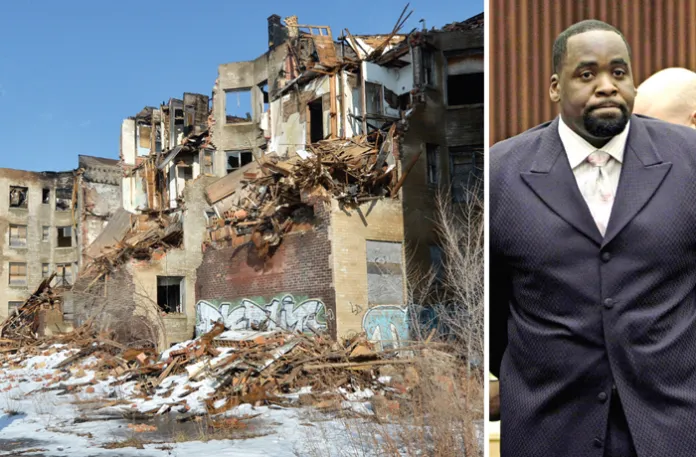
Seventy miles south of Denver, however, is Colorado Springs, which adheres to the intervention approach. Homeless people who have recently been cleared from encampments by police are offered emergency shelter, which consists of a cot in an enclosed public setting and breakfast the next morning. Then, they are encouraged to move into transitional housing, which is semi-private and requires active participation in substance abuse and mental health treatment and job training. Finally, participants are then transitioned to private housing after they have reentered the workforce.
The contrast in results between Denver and El Paso County, where Colorado Springs is located, is striking. While the number of homeless people continues to rise in Denver, El Paso saw a 12% drop in total homelessness and a 30% drop in unsheltered homelessness just last year.
Denver’s current mayor, Mike Johnston, declared a state of homelessness emergency in 2023, doubling down on the city’s “housing first” strategy. He invested heavily in housing and services for the homeless, and since the Supreme Court allowed Western cities to enforce vagrancy laws again, Johnston has allowed police to dismantle many homeless encampments.
Johnston’s policies have been somewhat successful. The number of unsheltered homeless has fallen since the encampment dismantling began. But the number of total homeless is still rising, all while Johnston’s housing and services programs have cost the city almost twice what Johnston projected.
Colorado Springs elected an independent mayor in 2022, and before that, the mayor was a Republican. By contrast, Denver has had only Democratic mayors since 1963.
Detroit’s ‘devastating corruption’ of debt
It might seem unfair to pin the blame for an entire city’s bankruptcy on one man, but when you look at the hard numbers, it is hard not to conclude that former Detroit Mayor Kwame Kilpatrick was the primary cause of the largest municipal bankruptcy in United States history.
Detroit had been losing population and, therefore, its tax base for years before Kilpatrick was first elected in 2001, but his predecessors, Dennis Archer and Coleman Young, both made tough choices, including cutting spending by firing many city employees to keep the city’s debt levels manageable. Kilpatrick, however, was a big spender, both personally and publicly.
More importantly, he viewed the city’s payroll as the main source of his political power. Not only did Kilpatrick not fire city workers to keep spending down, but he also went on a hiring spree, adding hundreds of his political allies to the payroll as part of a highly expensive patronage system. And when the costs of Kilpatrick’s bloated workforce couldn’t be met by city revenues, he resorted to paying the city’s day-to-day bills by essentially credit card, leaving the city no choice but to file for bankruptcy in 2014.
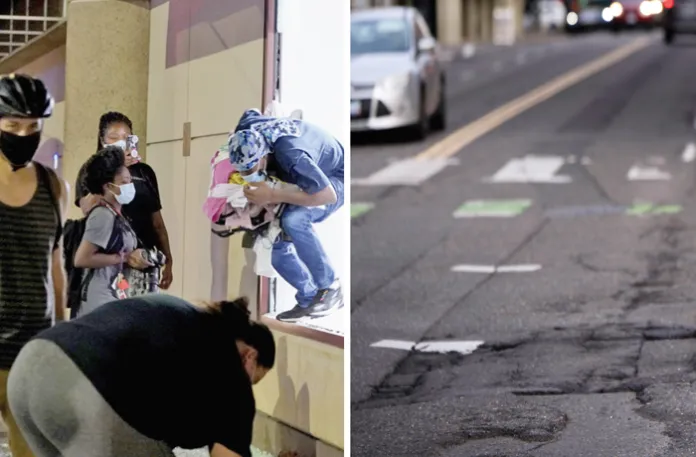
In the decade before Kilpatrick took power, downtown employment fell from 421,000 to 417,000. Detroit was not a city on the rise, but it was not in free fall either. By the end of Kilpatrick’s two terms, however, downtown employment had plummeted to just 270,000.
Some may blame “white flight” for Detroit’s woes, but that is not what pushed the city over the edge. According to a Brookings Institution study, it was the predominantly black middle class that fled Detroit during the Kilpatrick era. Because he was completely unconcerned with actually delivering services to citizens, such as policing, sanitation, and road maintenance, outmigration surged, more properties were abandoned, and city revenues shrank even faster.
In any Democratic Party-controlled city, government union pensions have a driving role in financial mismanagement, and they did for Detroit, too, but it was Kilpatrick’s nonpension spending, forcing the city to skip pension payments, that escalated the debt crisis so quickly. When Kilpatrick came into office, the city had just $3 billion in nonpension debt. By the time he resigned from office, that number had skyrocketed to $9 billion.
Law enforcement eventually cracked down on Kilpatrick’s patronage machine. He was convicted on 24 counts of extortion, bribery, mail fraud, and racketeering. In his sentencing motion after conviction, the Justice Department said Kilpatrick had “created a ‘pay-to-play’ system for the provision of city goods and services, which compromised vast swaths of city government, including the water and sewer system, the convention center, the pension system, casino developments, and recreation centers. City government essentially became up for grabs for the right price.”
The judge in the case said, “It is difficult to quantify the total cost of the devastating corruption instigated by Kilpatrick. But one thing was certain: It was the citizens of Detroit who suffered when they turned over their hard-earned tax dollars but failed to receive the best services.”
Detroit emerged from bankruptcy in 2014, and the current mayor, Mike Duggan, has delivered 11 straight balanced budgets. The city’s bond rating has improved. But the trimmed pensions and healthcare benefits given to government unions by past mayors are still just too much for the city’s tax base to bear. Even after bankruptcy, Detroit still has twice the debt per capita as Atlanta and the lowest bond rating in the nation.
Detroit has not had a Republican mayor since 1962.
‘Crime is almost being encouraged’ in Minneapolis
Katie Hoffman had lived in Minneapolis for 25 years when she looked out her bedroom window one night and saw a dozen people surrounding her car. Her bike had been stolen from her garage just a few weeks before, and she did not want to lose her car as well. She called 911, expecting the police would respond immediately.
Instead, she was told she was on her own. “She said we normally don’t send officers out on calls like this,” Hoffman recounted on a local podcast. “It’s happening so frequently,” the dispatcher told her. In total, thieves stole four cars from Hoffman’s street that night.
“I feel like crime is almost being encouraged,” Hoffman continued. “That’s how I feel since this incident.”
Minneapolis was the epicenter of violence and rioting after George Floyd’s death, and crime has surged since. While most of the country saw large declines, especially in homicide in 2024, the city’s murder rate climbed again. Following the pattern seen in Ferguson and Baltimore, ample evidence shows that saturation media coverage of police-involved deaths produces localized crime spikes as minority communities withdraw cooperation with law enforcement.
And that does appear to be happening in Minneapolis. The percentage of murders solved by police was over 90% in the 1960s. Nationally, that number has fallen below 50%, but in Minneapolis, it has cratered to 38%. Violent criminals know they can kill and not be caught, and they are responding accordingly.
But as bad as crime has gotten since 2020, Minneapolis’s upswing in crime actually started well before that. After falling for years, property crime began rising in 2018 in Minneapolis, and the formerly orderly city eclipsed the national average for property crime in 2019. Murder and violent crime rates also saw significant upticks before 2020.
The causes of Minneapolis’s pre-Floyd crime wave are no secret. As in many cities under Democratic control, Minneapolis mayors, prosecutors, and judges softened on crime after the deaths of Michael Brown in Ferguson and Trayvon Martin in Florida. The city hired fewer officers, prosecutors declined many drug and nonviolent cases, and even violent offenders received sentences far more lenient than the national average.
Then-President Barack Obama and the Minneapolis Public School District didn’t help either. In 2014, Obama’s DOJ forced the district to reduce suspension rates for black students. And suspension rates for black students promptly fell by half. The problem is, truancy has since skyrocketed. More than half of Minneapolis school students are chronically absent from class, meaning they miss 10% or more of the school year, a rate much higher than the national average. It is well established that truant students are a significant source of crime.
Since the Floyd riots, Minneapolis Mayor Jacob Frey has made reducing crime one of his top priorities. Instead of defunding the police, Frey has been forced to invest in the police force, which actually grew by more than two dozen officers between 2024 and 2025. But that slight uptick came only after a mass exodus under Frey’s rule. Before the Floyd riots, when Frey was still mayor, the Minneapolis Police Department had over 900 officers. Even after last year’s gains, the force has fewer than 600 today. There simply are not enough police on staff to get the 911 calls of residents like Hoffman.
Minneapolis hasn’t had an elected Republican mayor since 1961.
Portland’s streets are going ‘back to gravel’
Portland, Oregon, has long been a mecca for left-wing politicians, including native New Yorker Vera Katz, who famously fought climate change by investing heavily in the city’s MAX light rail and streetcar systems.
Subsequent Democratic mayors have since spent generously on the city’s Clean Energy Fund and Preschool for All, neither of which solved climate change or reduced income inequality in the city. But they did cut millions in spending for road maintenance. And now Portland drivers are paying the price.
“What you’re seeing now are the results of decisions made 20 or 30 years ago,” former Portland city engineer Steve Townsen told Willamette Week. Former city commissioner Steve Novick added, “We’ll have to talk about which streets are going to go back to gravel.”
According to a recent audit by the Portland Bureau of Transportation, 64% of all streets and 56% of highly used streets are in poor or very poor condition. A separate report found that the city faces a $4.4 billion backlog in street maintenance alone.
Beyond roads, the rest of the city’s infrastructure is suffering, too. In total, Portland owns about $74 billion in assets, including roads, bridges, parks, streetlights, water and sewer systems, and buildings. According to the city’s own numbers, 25% of these assets are in “poor” or “very poor” condition, and it is the city’s poorest neighborhoods that have the most maintenance needs.
In addition to funding glitzy progressive priorities such as climate change and child care over nuts and bolts maintenance, Portland has a heavily unionized infrastructure workforce. PBOT is almost entirely represented by the District Council of Trade Unions, which is a coalition of city unions that includes AFSCME Local 189, Laborers’ Local 483, Machinists District Lodge 24, Operating Engineers Local 701, and IBEW Local 48, as are the employees of the Water Bureau and Bureau of Environmental Services and the Parks and Recreation department. It is well established that unionized government workforces drive up costs for taxpayers without adding extra efficiency in services provided.
While the city’s crime and homelessness problems dominated last year’s election, Portland Mayor Keith Wilson campaigned to reverse the city’s policy of underfunding infrastructure. “The roads, bridges, and bike routes we depend upon are crumbling,” Wilson said during the campaign. “With hundreds of millions in deferred maintenance, an antiquated funding model, skyrocketing construction costs, mismanagement, and congestion, we’ve lost critical time and ground.”
Thanks to decades of underfunding by previous Democratic mayors, Portland has lost critical time to keep its infrastructure from falling apart. Portland has not had a Republican mayor since 1973.
America’s great cities were once engines of growth and opportunity. Today, under decades of one-party Democratic rule, they too often stand as cautionary tales of corruption, waste, and neglect. From Baltimore’s fraudulent schools to Denver’s failed homelessness policies, and from Detroit’s bankruptcy to Minneapolis’s crime wave to Portland’s crumbling roads, the pattern is unmistakable. When leaders prioritize ideology and patronage over accountability and basic governance, ordinary citizens are left to shoulder the burden.
THE CLOSING OF THE DEMOCRATIC PARTY MIND
When Democrats control the White House and Congress, they constantly blame Republicans for the nation’s problems. If only Republicans would just get out of the way and let Democrats govern with absolute power, everything would be fine.
But the Democratic Party has had complete control over most of the nation’s urban areas for over 50 years. It is time the party was judged by the outcomes it has produced.
Conn Carroll is commentary editor for the Washington Examiner.

